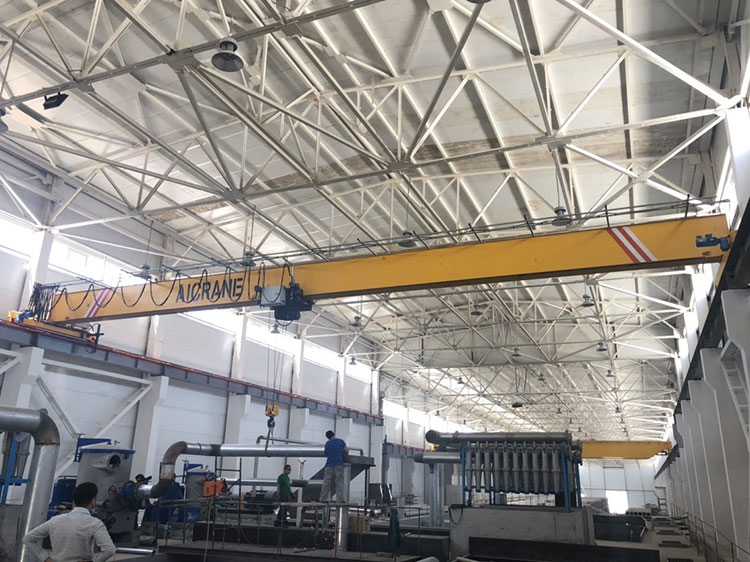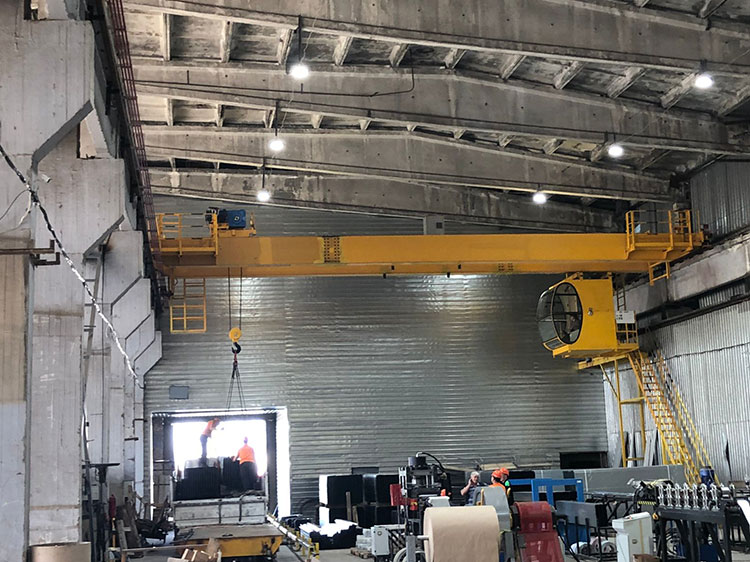When choosing an Electric Overhead Traveling (EOT) crane for a specific lifting requirement—such as a 10-ton load—one of the most critical decisions is whether to go with a single girder or double girder design. Both crane types offer unique advantages, and the decision impacts not only cost but also performance, installation, and maintenance. This article explores the differences between single and double girder EOT cranes, and which one is better suited for lifting a 10-ton load based on application requirements, cost-effectiveness, facility structure, and operating conditions.

Understanding Single Girder and Double Girder EOT Cranes
What Is a Single Girder EOT Crane?
A single girder EOT crane features one main horizontal beam (the girder) supported by end trucks at either end. The hoist travels along the lower flange of the girder. This crane type is typically used for lighter-duty applications and is known for its cost-efficiency and simpler installation.
What Is a Double Girder EOT Crane?
A double girder EOT crane has two main horizontal beams with the hoist mounted on a trolley that moves on rails installed on top of the girders. This configuration provides higher lifting heights and better stability, making it suitable for heavier and more frequent lifting operations.

Comparing Single and Double Girder Cranes for a 10-Ton Load
A 10-ton lifting capacity sits at the threshold where both crane types are technically feasible. Here’s a comprehensive comparison across several key dimensions:
1. Structural Design and Headroom
-
Single Girder:
Offers a more compact design, making it ideal for facilities with limited headroom. The hoist hangs below the girder, which limits lifting height. -
Double Girder:
The hoist sits on top of the girders, maximizing the hook height (the distance the hook can rise). This is critical in facilities where vertical space is a premium for lifting operations.
Conclusion:
If maximum lifting height is important, a double girder design has the advantage.
2. Installation and Maintenance
-
Single Girder:
Easier and faster to install due to its simpler design. Fewer components also mean lower maintenance requirements. -
Double Girder:
Installation is more complex and time-consuming, often requiring specialized equipment. However, its robust construction can lead to fewer breakdowns under continuous use.
Conclusion:
For ease of installation and lower maintenance, single girder is preferable.
3. Cost Considerations
-
Single Girder:
Generally less expensive in terms of initial investment, structural support, and installation costs. This makes it a popular choice for small to medium-sized businesses. -
Double Girder:
Costs more due to additional materials, components, and engineering. However, its long-term value becomes evident in demanding applications.
Conclusion:
If the budget is tight and operations are moderate, a single girder 10 ton overhead bridge crane offers a more cost-effective solution.
4. Crane Span and Facility Requirements
-
Single Girder:
Suitable for spans typically under 25 meters. Works well in small to medium-sized workshops and factories. -
Double Girder:
Better suited for longer spans and larger buildings. Provides added stability for wide-span applications.
Conclusion:
If the span required exceeds 25 meters or the building is large, the double girder crane becomes the more viable option.
5. Operational Frequency and Duty Cycle
-
Single Girder:
Designed for light to moderate duty applications. Not ideal for high-speed or continuous operations. -
Double Girder:
Handles frequent and demanding operations more efficiently. Offers higher speed and acceleration capabilities.
Conclusion:
For operations requiring frequent or heavy-duty lifting, a double girder crane is the more durable choice.
6. Customization and Add-Ons
-
Single Girder:
Can support basic functionalities like radio control and limit switches but has limitations with heavy automation. -
Double Girder:
Can be fully customized with walkways, service platforms, magnetic lifters, and anti-sway technology. Greater flexibility in integration with automation systems.
Conclusion:
If you require a more technologically advanced crane with automation or specialized features, double girder is preferable.
Application Scenarios for 10-Ton Cranes
To make an informed choice, consider your application:
-
Manufacturing Workshops:
If your workshop involves lifting materials periodically or as part of an assembly process, a single girder crane is typically sufficient. -
Precast Concrete Plants or Steel Warehouses:
These environments often require frequent heavy lifting and higher speeds, making the double girder crane the better choice. -
Maintenance Bays or Service Stations:
Occasional lifting of components like engines or large parts in constrained spaces benefits from the single girder crane’s compact design. -
Construction Material Yards or Heavy Fabrication Units:
With their higher lifting height and span capacity, double girder cranes ensure better productivity in such facilities.
Case Study: Choosing Between the Two
Scenario:
A medium-sized metal processing plant is looking to install an overhead crane with a 10-ton capacity to handle steel beams and sheets.
-
Building height: 8 meters
-
Span required: 18 meters
-
Lifting frequency: Moderate (20-30 lifts per day)
-
Budget: Moderate
Recommendation:
Given the moderate span and frequency, a single girder EOT crane is suitable. It offers enough capacity, is cost-effective, and fits within the available headroom. However, if the same facility later expands and starts operating more shifts with heavier workloads, upgrading to a double girder crane might be necessary.
Future-Proofing Your Investment
If you’re uncertain about your facility’s future needs, consider these:
-
Modular Expansion:
Choose a crane that can be upgraded. Some single girder cranes can be modified or their components reused if switching to double girder later. -
Standardization:
Select standardized components that are compatible with both systems. -
Supplier Consultation:
Work with an experienced EOT crane manufacturer who can assess your site conditions and provide tailored advice based on long-term goals.
Final Verdict: Which One Suits Your 10 Ton Load?
| Factor | Best Option |
|---|---|
| Budget | Single Girder |
| High Lifting Height | Double Girder |
| Frequent Heavy-Duty Use | Double Girder |
| Limited Headroom | Single Girder |
| Span > 25 meters | Double Girder |
| Ease of Installation | Single Girder |
| Automation Compatibility | Double Girder |
Summary:
For many standard 10-ton lifting applications, especially in smaller workshops or where budget is a concern, single girder EOT cranes are more than adequate. However, for more intensive use cases involving greater lifting heights, longer spans, and more frequent operations, double girder cranes provide the necessary strength, speed, and stability.
Choosing the right crane is about more than just capacity – it’s about aligning crane performance with your operational needs. Consult with a reputable EOT crane manufacturer to determine the best fit for your application, whether it be a single girder EOT crane or a double girder EOT crane.
If you need help choosing the right crane for your facility, feel free to contact Aicrane. We specialize in both single girder EOT crane manufacturing and double girder EOT crane solutions, offering custom designs, installation, and after-sales service.